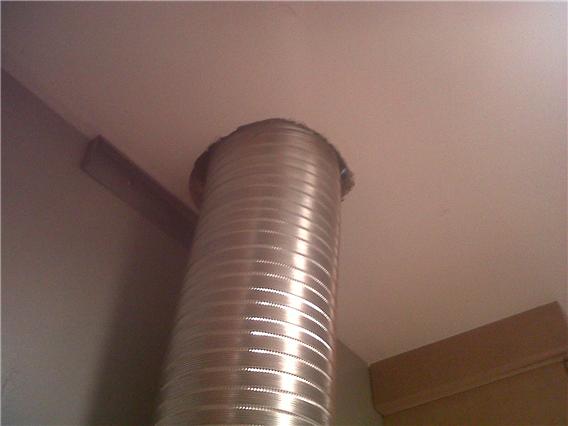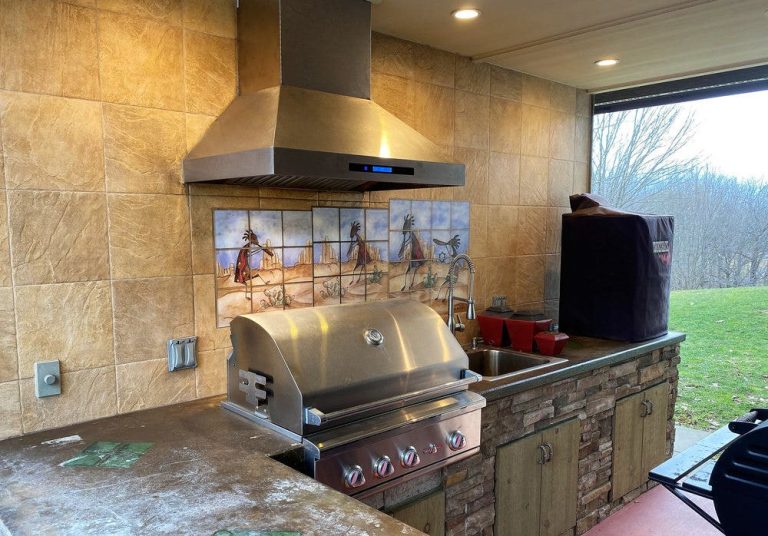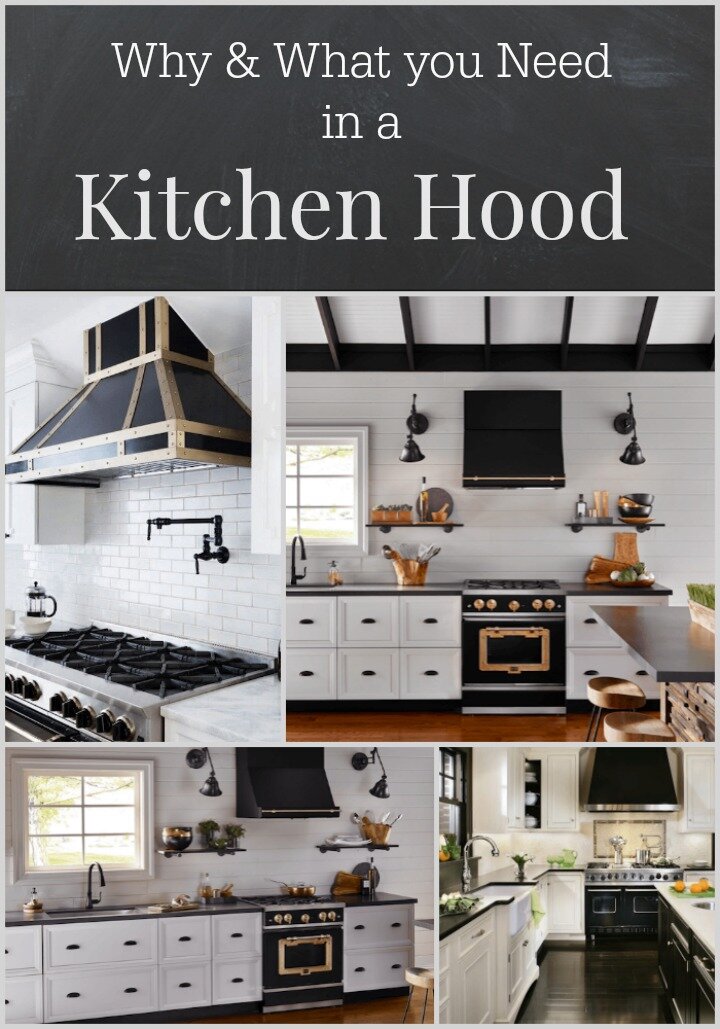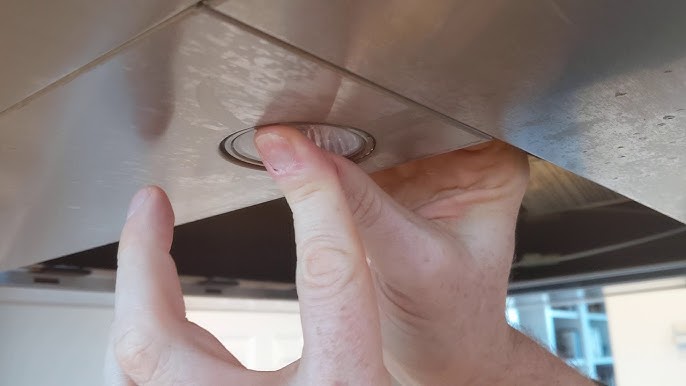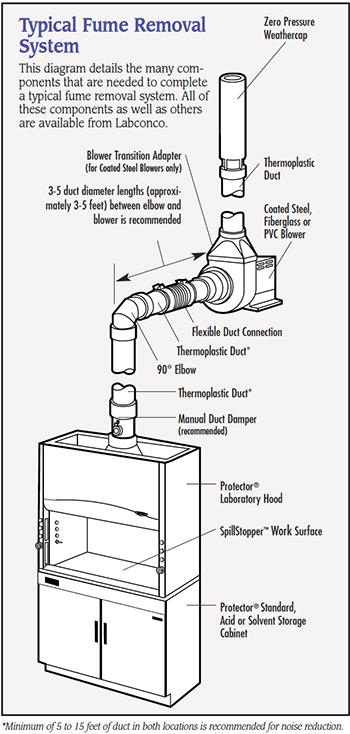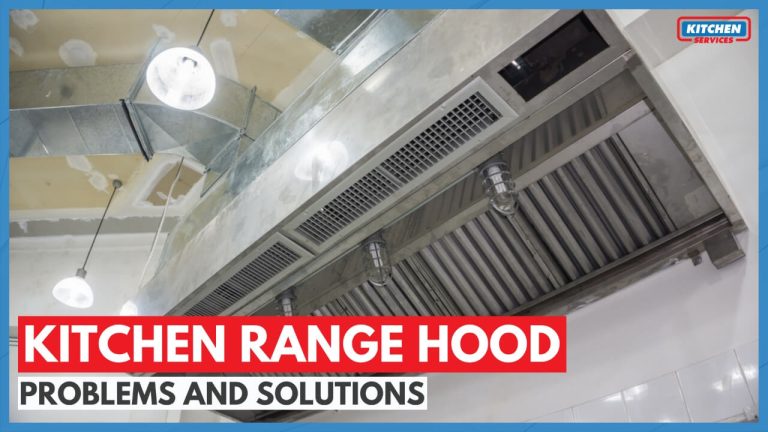To seal a range hood vent, use high-quality duct tape or foil tape. Ensure the vent connections are tight and secure to prevent air leaks.
Sealing a range hood vent is essential for efficient kitchen ventilation. Proper sealing prevents unwanted air from entering or escaping, improving your cooking environment. A well-sealed vent reduces energy costs and enhances the performance of your range hood. Over time, gaps can form, allowing grease and odors to linger in your kitchen.
Regularly check your vent for leaks and reseal when necessary. This simple maintenance task ensures your range hood operates effectively, making your cooking experience more enjoyable. With the right materials and techniques, sealing your range hood vent becomes an easy DIY project that can enhance your kitchen’s efficiency.

Credit: diy.stackexchange.com
Introduction To Range Hood Vent Sealing
Sealing a range hood vent is very important for your home. A well-sealed vent keeps the air clean. It also prevents smoke and odors from spreading. This helps maintain a fresh kitchen environment.
There are several benefits to sealing your range hood vent:
- Reduces energy costs by preventing air leaks.
- Improves air quality by keeping out pollutants.
- Minimizes the risk of fire hazards from grease buildup.
- Enhances the efficiency of the range hood.
- Extends the life of your kitchen appliances.
Tools And Materials Needed
For sealing a range hood vent, having the right tools is crucial. Below is a list of essential tools:
- Silicone sealant – Flexible and water-resistant.
- Caulk gun – Helps apply sealant evenly.
- Utility knife – For trimming excess materials.
- Putty knife – Useful for smoothing sealant.
- Measuring tape – Ensures accurate measurements.
- Safety goggles – Protects eyes during work.
Choosing the right sealant is also important. Opt for a high-temperature silicone sealant. This type withstands heat well. Ensure it’s also waterproof for better durability. Read product labels to confirm suitability for kitchen use.
Preparing The Work Area
Safety is important while sealing your range hood vent. Always wear gloves and goggles. This protects your hands and eyes from dust and debris.
Start by clearing the area around the vent. Remove any items like pots, pans, or kitchen tools. A clean space helps you work better.
Next, clean the vent area thoroughly. Use a damp cloth to wipe away dirt and grease. This makes sealing easier and more effective.
Ensure that the area is dry before starting any sealing work. Moisture can affect the sealant.
Inspecting The Vent
Inspecting the vent is crucial for a safe kitchen. Look for common issues like leaks, rust, or blockages. Leaks can lead to moisture problems. Rust may indicate damage or age. Blockages can limit airflow, making the hood less effective.
Check for loud noises during operation. Strange sounds can signal mechanical problems. Smoke or foul odors when cooking may suggest a vent issue. If noticing any of these signs, prompt action is essential.
Professional help is wise for extensive damage or if unsure about repairs. Experts can perform thorough inspections. They ensure the vent operates safely and efficiently. Regular maintenance can prevent costly repairs in the future.
Steps To Seal The Range Hood Vent
Start by cleaning the area around the vent. Remove dust and grease for better adhesion.
Use a high-quality sealant designed for kitchen use. Apply it evenly around the vent edges.
Press the vent firmly to ensure a good bond. Wipe away any excess sealant for a neat finish.
Allow the sealant to dry completely. This ensures airtight sealing and prevents leaks.
Check for any gaps after drying. Fill in any missed spots to maintain a strong seal.
Regularly inspect the sealant. This helps to keep the range hood functioning properly.
Credit: basc.pnnl.gov
Ductwork Considerations
Sealing duct joints is essential for a proper range hood installation. Use mastic sealant or metal tape to ensure a tight seal. Both methods prevent air leaks and improve efficiency.
Insulating the ductwork helps maintain the temperature of the air. Choose duct insulation that fits your ducts snugly. This insulation also reduces noise from the range hood.
| Sealing Technique | Description |
|---|---|
| Mastic Sealant | A thick paste applied to joints for a strong seal. |
| Metal Tape | Durable tape that sticks to joints and prevents leaks. |
Final Checks And Testing
After sealing the range hood vent, perform a visual check. Look for gaps or cracks. Use a flashlight to see better. Ensure everything looks tight and secure.
To test the seal, turn on the range hood. Check for any leaks or unusual sounds. If it works quietly, the seal is likely good. If air escapes, reseal it.
Regular maintenance helps keep the vent in good shape. Clean the vent regularly to remove grease. Check the seal every few months. This keeps the kitchen safe and odor-free.
Use the following tips for upkeep:
- Inspect the vent cover often.
- Replace damaged parts quickly.
- Keep the area around the hood clean.
Common Mistakes To Avoid
Many people overlook ventilation needs when sealing range hood vents. Proper airflow is key for effective operation. Ignoring this can lead to poor performance and unwanted odors.
Using incorrect materials can also cause issues. Not all materials are suitable for heat and moisture. Choose durable options that can withstand these elements. This prevents future problems and ensures a long-lasting seal.
Enhancing Range Hood Efficiency
To optimize airflow in your range hood, ensure all parts are clean. Dust and grease can block airflow.
Regular cleaning routines make a big difference. Wipe the filters and fan monthly. This keeps them working well.
Check the ducts for any blockages. Clear ducts allow better airflow. Inspect them every few months.
Seal any gaps around the vent. Use caulk or foam to close holes. This prevents air leaks.
| Cleaning Task | Frequency |
|---|---|
| Wipe filters and fan | Monthly |
| Inspect ducts | Every few months |
| Seal gaps | As needed |
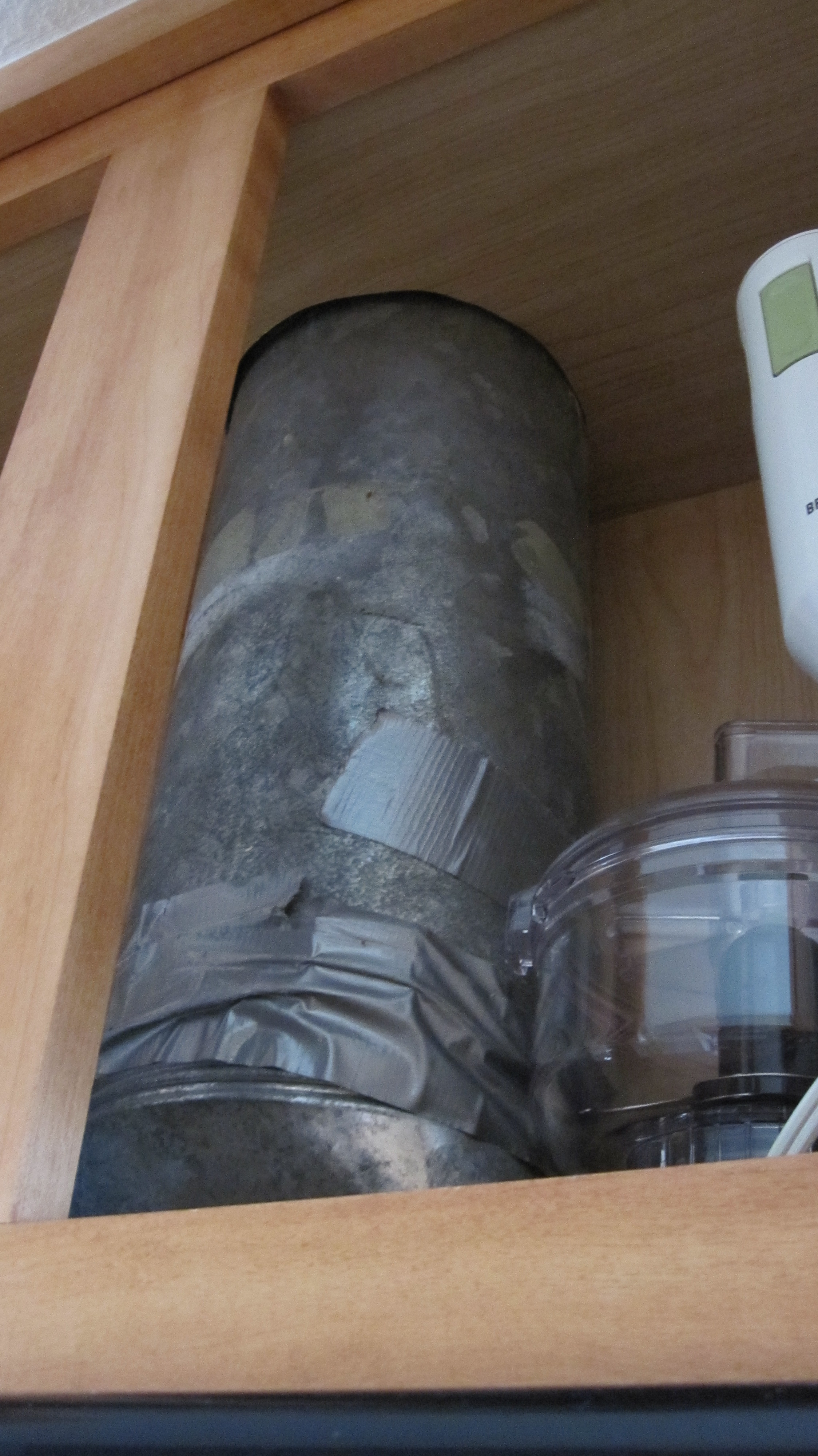
Credit: basc.pnnl.gov
Frequently Asked Questions
How Do I Know If My Range Hood Vent Is Sealed?
You can check for proper sealing by inspecting the duct connections and joints. Look for any gaps or loose fittings. You may also notice air leaks or odors entering the kitchen. A smoke test using incense can help identify airflow issues as well.
What Materials Are Best For Sealing Range Hood Vents?
The best materials for sealing range hood vents include high-temperature silicone sealant and aluminum foil tape. These materials are heat-resistant and durable. Make sure to clean the surfaces before applying any sealant. This ensures a strong bond and prevents future leaks.
Can I Seal A Range Hood Vent Myself?
Yes, sealing a range hood vent can be a DIY project. Gather the necessary materials and tools before starting. Ensure you follow safety precautions, such as turning off power to the range hood. With a little patience, you can effectively seal the vent to improve performance.
What Are The Benefits Of Sealing Range Hood Vents?
Sealing range hood vents improves energy efficiency and prevents unwanted odors. It also reduces moisture buildup in your kitchen. A well-sealed vent enhances the performance of your range hood, ensuring better air quality and minimizing the risk of mold growth.
Conclusion
Sealing your range hood vent is essential for maintaining energy efficiency and indoor air quality. By following the steps outlined in this guide, you can ensure a secure fit. Regular maintenance will also help prolong the life of your vent.
Enjoy a cleaner, healthier kitchen environment with a properly sealed range hood.
